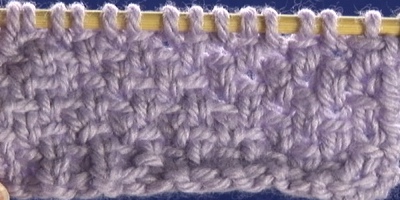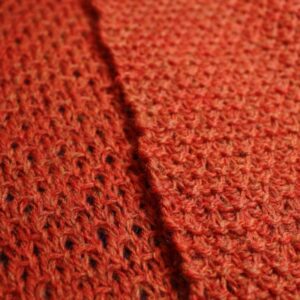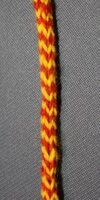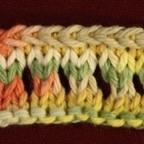Note: Reading a knitting pattern can be incredibly confusing, if you aren’t familiar with the abbreviations. Most patterns come with an abbreviation list, but occasionally you might across a pattern without a glossary of abbreviations to help you decipher the needed stitches. Here is a comprehensive list of knitting abbreviations.
If you are new to knitting, putting these abbreviations into practice can be difficult. In this article, we will add some examples of those abbreviations with quick projects you can do on your own, to practice following a pattern. Or, you can choose to watch the video tutorial and follow along visually.


[ k1, sl 1 wyif ] end k2
Purl
k1 [ k1, sl 1 wyif ] end k1
Purl
Repeat items in brackets [ ]
First, you will need to decipher the pattern. Most patterns come with a glossary of the knitting abbreviations used in the pattern, but we have a list here as well. The above pattern then reads:
In this example, I cast on 18 stitches.
- [Knit 1, With Yarn In Front Slip 1] Knit 2
- Next Row: Purl
- Next Row: Knit 1 [Knit 1, With Yarn In Front Slip 1] end Knit 1
- Next Row: Purl
This creates the Linen Knit Stitch. To make a slightly different texture, try a knit stitch (garter) between rows instead of a purl stitch. This creates a Basket Weave Stitch.
Below you will find a video tutorial of the above pattern:



